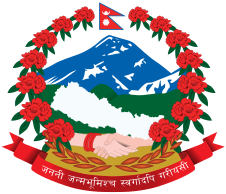Indra Jatra Festival in Nepal

Indra Jatra is also known as Yenya in Nepal Bhasa. Ye signifies “Kathmandu,” and nya signifies “celebration”; together, it means “celebration inside the Kathmandu Valley.” The celebration is eight days long; the main venue of the festival is Kathmandu Durbar Square. Every year, the state’s most powerful person—the president—comes there to initiate the program. Today, the government has officially announced the holiday for all Kathmandu Valley residents.
Indra Jatra of Nepal: Colorful Festivals of Culture and Tradition
The Festival of Indra Jatra of Nepal is an affluent and lavish festival of the Himalayan country. As a feature of the colorful Kathmandu festival, the narrow lanes of Kathmandu, the capital of Nepal, are a theater, and age-old rituals are re-enacted through mask dances, processions, and religious festivals.
What is Indra Jatra?
The Indra Jatra Nepal festival honors the Nepalese god of the harvest and the rains, Lord Indra, and Kumari, the living goddess, during a week-long event. As a yearly festival, the ageless festival of Nepal celebrates the conclusion of the rainy season as much as the imminent harvest. As a distinct amalgamation of Buddhist and Hindu traditions, the festival of Nepal, i.e., the Indra Jatra, is a very inclusive Nepal cultural festival.
Historical Significance and Source
This religious festival of Nepal started ages and ages ago when King Gunakamadeva ruled the 10th-century kingdom. As per myth, the god Indra descended upon the earth to pick the parijat flowers to offer to his mother, yet the people, not knowing the god, jailed him. When the mother of Indra descended to search for him, she promised to offer all the crops the dew they require, as well as take the lives of the people lost throughout the year to heaven. Because of the mythic origin, the festival of the Indra Jatra became religious as well as an agrarian festival.
Splendid Kathmandu Durbar Square Festival
The center of the Indra Jatra Festival echoes loudest at Kathmandu Durbar Square, the center of the principal festivities. Kathmandu Durbar Square, as a World Heritage Site of UNESCO, is the festival hub, and the ancient religious and royal palaces provide a royal backdrop for the age-old performances. The Kathmandu Durbar Square festival scene comes alive when the town welcomes a gathering of a thousand devotees, guests, and locals, all observing the sparkling performances.
Important Rituals and Celebrations
The Kumari Procession
One of the activities of the Nepalese cultural festival is the Kumari procession, the living deity of the country of Nepal. Closely believed to embody the goddess Taleju, the adolescent girl, as a deity, moves among the people, going through the city streets in a grand ceremonial chariot, blessing the people through her very existence.
Masked Dances and Lakhe Performances
Mask Festival includes spectacular masked dance through several figures, e.g., the renowned Lakhe dance. They show the victory of good over bad and are a combination of entertainment as well as religious instructions to the people.
Indra Dhwaja and Holy Pole
The formal beginning of the festival occurs when the ceremonial lifting of the Indra Dhwaja (banner of Indra) occurs. During the festival period, the ritual pole, which consists of multi-colored banners and flags, forms the center of the Kathmandu Durbar Square.
Cultural Impact and Community Involvement
The Indra Jatra festival in Nepal is not as much about religious practice as about the motivation behind the continuity of culture and group identity. Families are preparing months in advance, designating ethnic dress, rehearsing dances, and preparing festival-oriented dishes. During the festival, the festival itself becomes the cause for a variety of ethnic people of Nepal to gather and share their shared legacy.
Local minstrels play the old dances, local crafters sell their crafts, and festival specialties are sold at the street stalls. As an economic activity, the Aged Festival of Nepal serves as a significant local economic contributor, i.e., the Kathmandu Valley.
Current-Day Celebrations and Tourism
This year's Indra Jatra festival has transformed to fit today's Nepal while still retaining the spark of the original. Foreigners running into the thousands, with the sole mission of witnessing the genuine religious festival of Nepal, infest the festival. World-class photographers, ethnographic experts, and religious figures flock to the uncommon festival.
Social media played a role as well to promote the awareness of the Kathmandu festival, as gorgeous photos as well as event videos have been posted all over the globe and encouraged others to witness the rich cultural life of Nepal firsthand.
Conclusion
In the festival of Nepal, Indra Jatra reflects the ultimate fusion of timeless tradition and modern culture. Surviving to the current day, the mega festival serves as an effective reminder of the richness of the cultural heritage of Nepal as much as the eternal nature of communal celebration. For those curious about the religious as much as the cultural heart of Nepal, the observation or participation in the festival of Nepal Indra Jatra provides an enduring glimpse into the heart of the unusual nation. Regardless of whether you are a cultural buff, spiritual buff, or curious tourist, the Indra Jatra Festival in Nepal promises the guarantee of an event that will have lasting memories as well as a deeper sensitivity towards the rich traditions that continue to flourish at the heart of the Himalayas.


.png)
.png)






